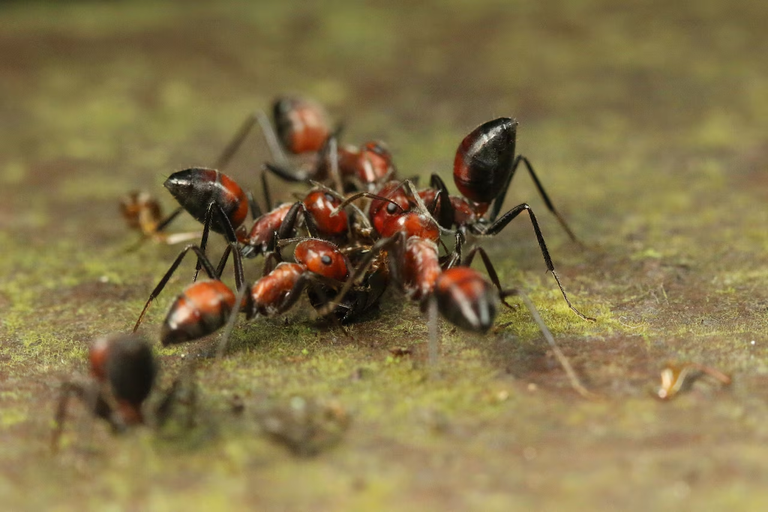
Bombardier ants, also known as "bombing ants," have a unique defense mechanism to protect their colony. When threatened, they release a chemical explosion from their abdomens, a process similar to their relative, the bombardier beetle. This defense mechanism is primarily used to fend off predators or enemies that threaten the nest or individual ants.
The process begins in special glands in the abdomen, where two chemical compounds, hydroquinones and hydrogen peroxide, are stored. When the ant feels threatened, these chemicals are mixed in a reaction chamber, catalyzed by enzymes. This causes a rapid, exothermic reaction that heats the liquid and turns it into a toxic, boiling spray, which is forcefully ejected from the ant's abdomen.
The spray is not only hot but also corrosive, causing pain or damage to predators such as insects or small animals. The force of the spray can also help to propel the ant away from danger, offering a dual-purpose escape. This method of defense is vital for the survival of the colony, as it allows the ants to protect both themselves and their nest from larger predators, ensuring the colony's continued success.
Upvoted. Thank You for sending some of your rewards to @null. Get more BLURT:
@ mariuszkarowski/how-to-get-automatic-upvote-from-my-accounts@ blurtbooster/blurt-booster-introduction-rules-and-guidelines-1699999662965@ nalexadre/blurt-nexus-creating-an-affiliate-account-1700008765859@ kryptodenno - win BLURT POWER delegationNote: This bot will not vote on AI-generated content